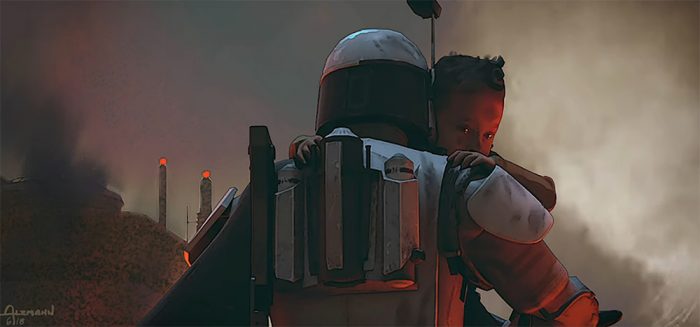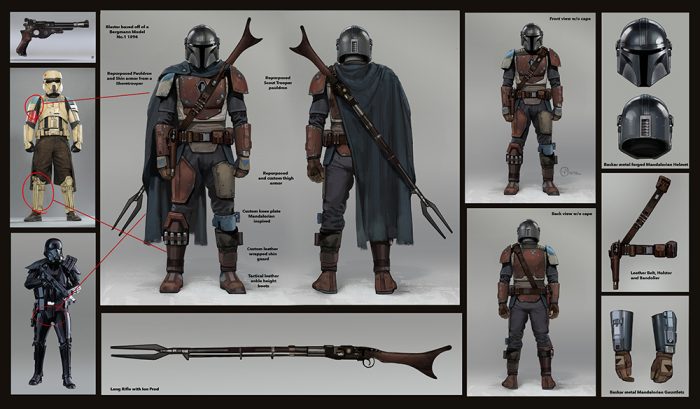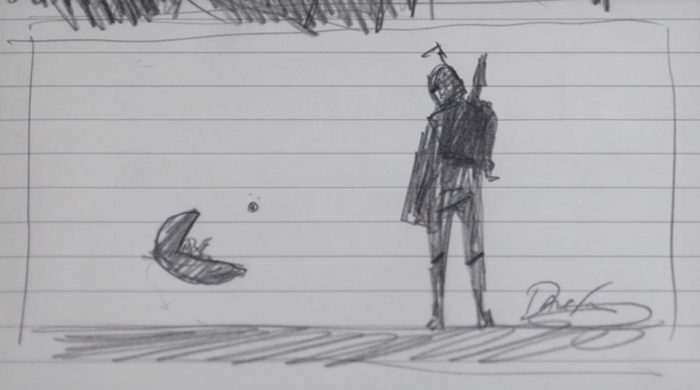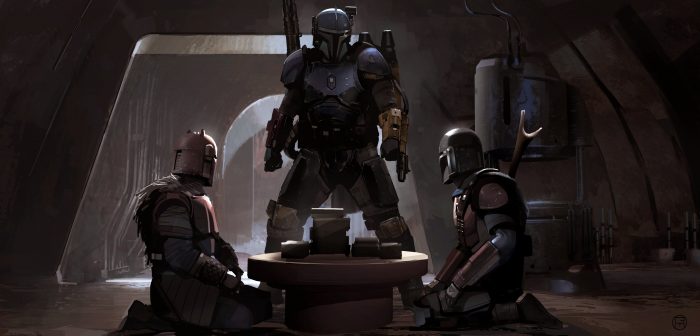'The Art Of The Mandalorian' Digs Into The First Live-Action 'Star Wars' Series With Stunning Illustrations
The Mandalorian made Star Wars history as the first live-action TV series. Now you can find out how the project came together at Lucasfilm as one of the first original programs on Disney+ thanks to The Art of The Mandalorian. The book not only features ample amounts of concept art that show off the developmental evolution of the characters, settings, weapons, aliens, and more from the first season of The Mandalorian, but it also digs into the inception of the series and behind-the-scenes details from each of the first eight episodes.The Art of The Mandalorian is written by Phil Szostak, Lucasfilm's creative art manager and the author of the art books for The Force Awakens, The Last Jedi, The Rise of Skywalker, and Solo: A Star Wars Story. Just like those books, this is a fascinating and in-depth look at the art used to bring the series to life with plenty of insider perspectives and tidbits to pore over. However, fans might be disappointed to see that despite the fact that the first season of The Mandalorian spans the length of two Star Wars movies, the book isn't double the size of their companion books.
Even so, The Art of the Mandalorian covers plenty of ground in the creation of this increasingly ambitious Star Wars series. It begins by harking back to the original Star Wars trilogy and the creation of the mysterious Boba Fett, which obviously serves as inspiration for the show's titular character, not just in his appearance, but also the manner with which the bounty hunter known as Din Djarin carries himself. Early on, a lot of the concept art simply reuses Boba Fett's armor, including the big dent on his helmet, simply because it took executive producers Jon Favreau and Dave Filoni some time to figure out how to properly differentiate The Mandalorian from the character fans had come to love after his big screen debut in The Empire Strikes Back.
Within the book, there are hundreds of pieces of The Mandalorian concept art. Some you'll recognize as pieces that were featured in the end credits of each episode as they debuted on Disney+. But there are even more detailed and mesmerizing works you haven't seen before, some given rich, full two-page spreads that you might even be compelled to run your fingers over in admiration. Many of these images come with added insight from the artists and information about what inspired their work, whether it was the Lone Wolf and Cub manga, the films of Akira Kurosawa, countless classic westerns, or the familiar Star Wars aesthetics created by legendary artist Ralph McQuarrie.
In addition to these pieces, even more artwork is collected to highlight different versions of characters, vehicles, and settings. For example, there's a little spread featuring alternate designs for Mando's ship the Razor Crest. The book reveals the inspiration for the ship's general vibe came from Favreau's love of the A-10 Thunderbolt "Warthog," a twin turbofan engine, straight wing jet aircraft, and each of the varying approaches to the ship borrowed elements of that real aircraft until they settled on the design seen in the show. There are dozens of anecdotes like this from the many artists who worked on the movie, complete with images that show the evolution of their concepts and designs, explaining the subtle variations between each and the motivation behind them.
If you wondered what Carl Weathers' character Greef Karga would have looked like if he ended up being an alien Weequay as originally intended, there's a glimpse at the design. If you want a better look at the various Mandalorians from the secret bounty hunter stronghold on Nevarro, a collection of illustrations reveal the variations in armor. This includes a variety of alternate looks for The Armorer, featuring some wild, unique helmet designs that are significantly different from what ended up on the series. The same can be said for unused designs for decommissioned Stormtroopers, some of which covered up the traditional white armor with more gear. And that's just the tip of the iceberg.

While a lot of the images within the book are cinematic and artistic in nature, there are also pieces of art that get more technical and detailed, mostly for the benefit of the other departments on the production that have to create props and sets. For cosplayers who want an up close look at certain pieces of armor, weapons, and other props, this book will likely be a valuable tool in the creation of your next pop culture convention wardrobe (though maybe not as much as the forthcoming The Mandalorian Ultimate Visual Guide coming in July 2021).

Meanwhile, some of my favorite pieces in the book are the more simple sketches created by Dave Filoni in order to illustrate (no pun intended) the ideas in his head. You'll see a notebook sketch of Boba Fett's helmet with the equivalent of a tagline that essentially acts as a basic pitch for the series, and there are many more throughout the book. Another series of sketches by Filoni show early ideas for The Child where he was given a little samurai-like ponytail just like the child from Lone Wolf and Cub, and if you want to see all the different designs the team went through before settling on the little guy we've seen in the series, you won't be disappointed.
If there's one area where The Art of The Mandalorian might be lacking a little, it's in the production details of the show itself. That's not entirely unexpected since this book is called The Art of The Mandalorian and not The Making of The Mandalorian. Each episode is given a one-page breakdown pinpointing some details from the set, but these sections mostly retread what fans my have already learned from the documentary series Disney Gallery: The Mandalorian on Disney+. If you haven't seen that series, it's worth diving into before or after reading through this book.

Overall, because this book is being released a year after the series debuted, it includes much more spoilery details than most of the other Star Wars art books. But there's still a spoilery element of the series that doesn't get explored as much as I would have liked. The darksaber is only featured in three pieces of artwork, and they only appear after the book's index and acknowledgements without next to no insight from the artists. There is one piece that provides the most detailed look at the live-action darksaber hilt that we've seen, but it would have been nice to see more artwork focused on the famed weapon, especially considering its importance in Star Wars lore.
But beyond that, Star Wars fans looking for a great coffee table book that is chock full of astounding concept art from Lucasfilm will be more than satisfied with the contents of this book. And since this is just for the first season of The Mandalorian, it's exciting knowing that we'll likely be getting a book like this for every single season that follows. And considering everything that's happened in the second season so far, the next book is going to have even more amazing artwork.
The Art of The Mandalorian (Season One) is available for purchase right now.


